Gilded
Masonic Mantle Clock
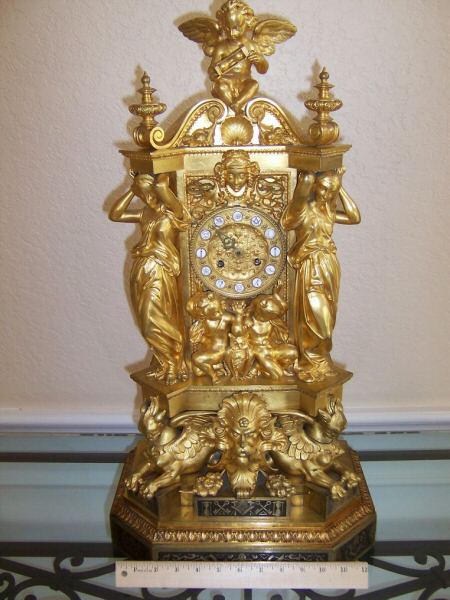
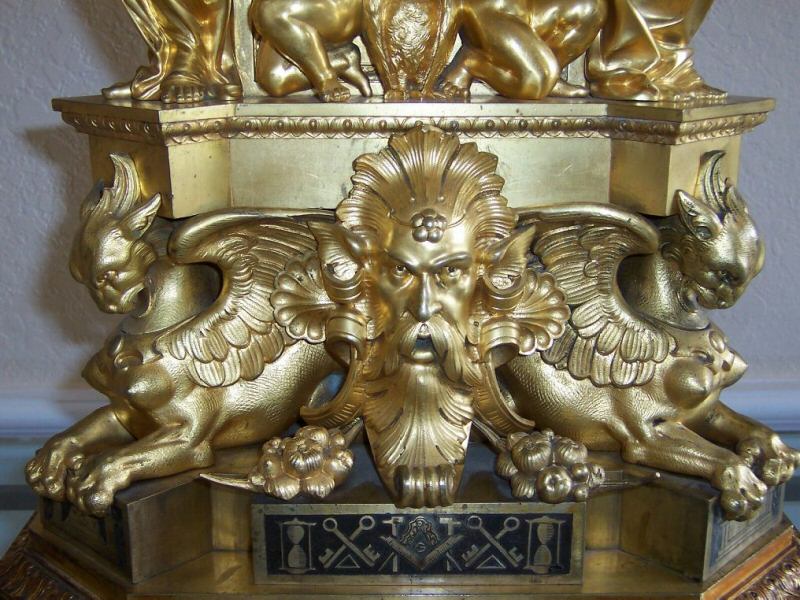
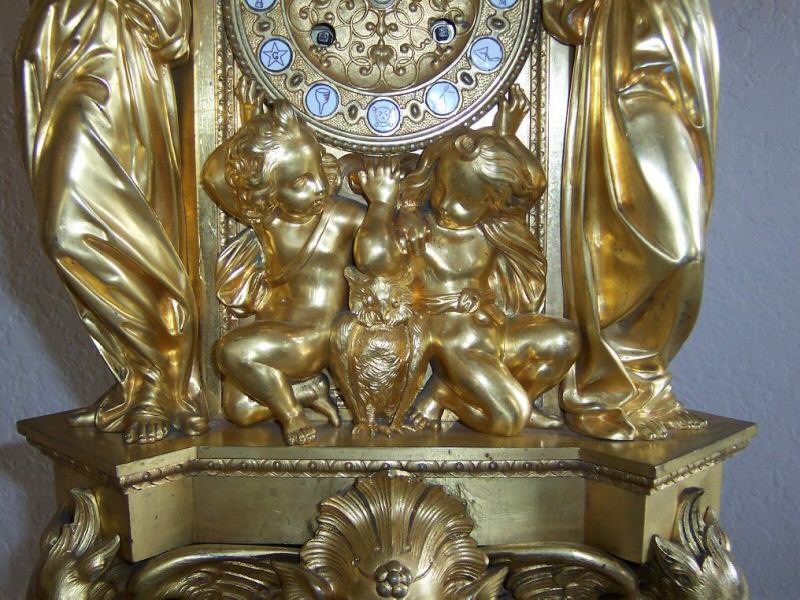
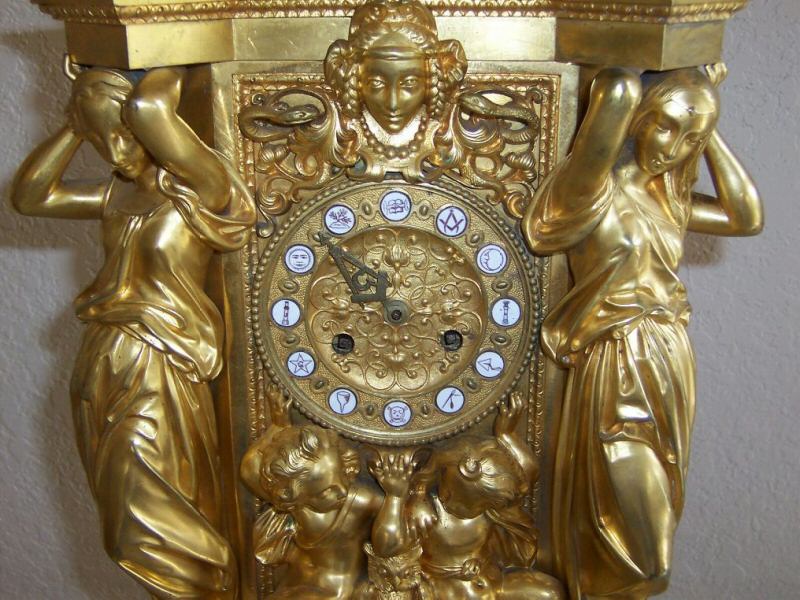
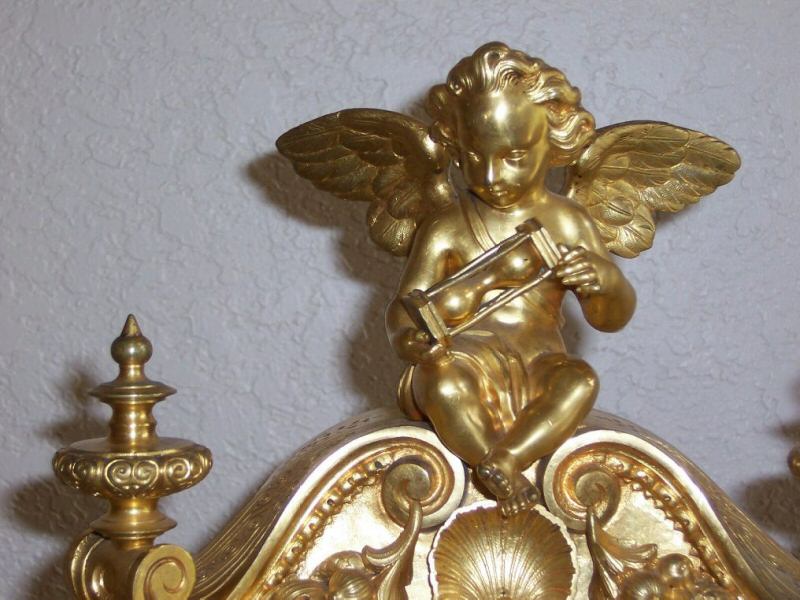
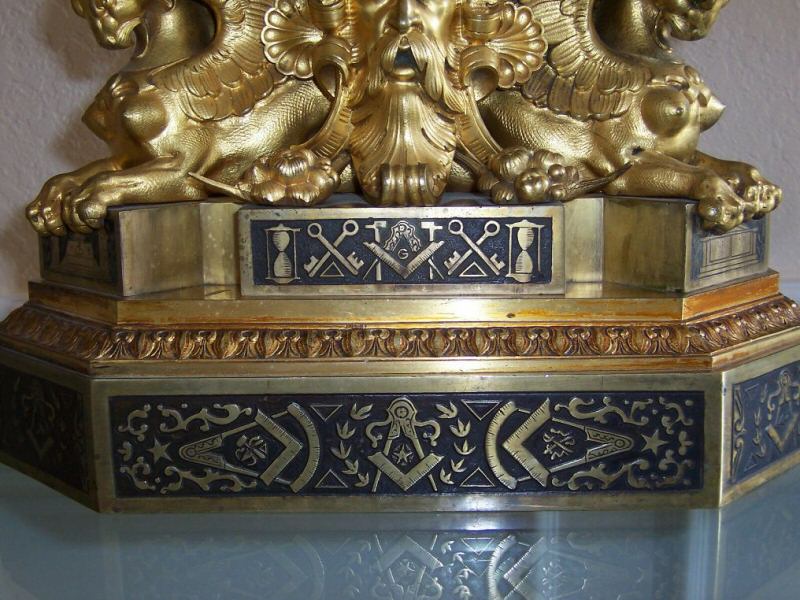
This beautiful mantle clock depicts several different Masonic, Greek, Indian and
Classical themes. On the base are two female griffins. The griffin is a mythical
creature that has the head and wings of an eagle and the body of a lion.
Sometimes it is depicted as having a long snake for a tail. Most of the time,
only the female ...has
wings and males have spikes on their backs instead of wings.
The griffin is said to be native to India, although nobody knows for sure
exactly where it came from. These winged monsters would find gold in the
mountains and built nests from it. Of course, this lured hunters, so griffins
kept a very hostile guard over their nests. They would eat the men and devour
their horses.
Griffins are usually heroic symbols. They are well known for their speed,
ability to fly and having eyes like an eagle, as well as the strength and
courage of a lion. In hieroglyphics, griffins represent heat and summer. In
Assyria (an ancient empire of western Asia,) both the griffin and the dragon
were symbols of wisdom. In Roman art, griffins are often pulling the chariot of
Nemesis (goddess of justice and revenge).
In Greek mythology the griffins were always at war against a race of one-eyed
humans called Arimaspians who were constantly trying to steal their gold.
Between the griffins appears Dionysus or Dionysos the ancient Greek God of wine,
parties/festivals, madness and merriment. He represents not only the
intoxicating power of wine, but also its social and beneficial influences. His
symbols are the grape vine, ivy, and thyrsus.
Above him is an Owl with two cherubs supporting the dial. In certain cultures
(China, Egypt, India) the symbolic meaning of owl is associated with death, but
you must understand that the owl is not a symbol of death per se. Rather – it
was revered (honored) as being the guardian of the after-life – a highly
respected emblem indeed.
Taking symbolism from the owl directly, it is noteworthy that it is a creature
of the night. Nocturnal creatures are symbolic of inner-knowing, psychic
ability, and intuition – so too is the owl.
Above the dial is an Indian God that might represent Shiva. Shiva is often shown
garlanded with a snake. Shiva is seen as the Supreme God. In Judaism, shiva is
the week-long period of grief and mourning for the seven first-degree relatives:
father, mother, son, daughter, brother, sister, and spouse. (Grandparents and
grandchildren are traditionally not included). As most regular activity is
interrupted, the process of following the shiva ritual is referred to as
"sitting" shiva. Shiva is a part of the customs for bereavement in Judaism. This
is a week-long period of grief and mourning. Observance of shiva is referred to
by English-speaking Jews as "sitting shiva". During this period, mourners
traditionally gather in one home and receive visitors.
At the top of the clock sits another cherub holding an hourglass. Unlike most
other methods of measuring time, the hourglass concretely represents the present
as being between the past and the future, and this has made it an enduring
symbol of time itself.
The hourglass, sometimes with the addition of metaphorical wings, is often
depicted as a symbol that human existence is fleeting, and that the "sands of
time" will run out for every human life. It was used thus on pirate flags, to
strike fear into the hearts of the pirates' victims. In England, hourglasses
were sometimes placed in coffins, and they have graced gravestones for
centuries.
Around the base and the dial are the Masonic working tools and other various
symbols. This mantle clock is 12 inches wide and stands almost 30 inches tall.

|
